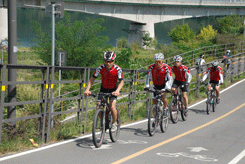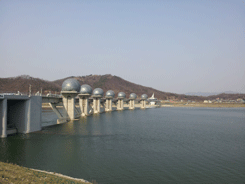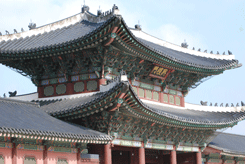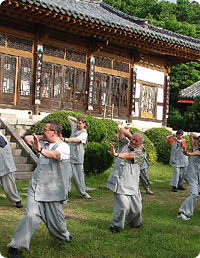SPECIAL INTEREST
Rivers by Bike 12 days



| Tour facts and features | |
| Accommodation | 12 hotel nights in 2 and 4 star twin share accommodation |
| Meals | 7 breakfasts |
| Transport | Round trip airport transfers, city tour, support vehicle on riding, and speed train |
| Guide | Services of an English speaking guide |
| Group size | Maximum 6 |
| Age range | 18+ |
| Activity | Cycling of 8 days |
| Degrees of difficulty | Normal |
Note
Please read the following carefully.
All distances, times, and road conditions mentioned in this program are estimates and provided for guidance only.
Your safety and well-being are your personal responsibility.
Ride responsibly:
Maintain a safe speed, yield the right-of-way, and never ride under the influence of alcohol.
Daytime riding only: Rides are scheduled strictly between sunrise and sunset.
Weather conditions:
Rides will be canceled during bad weather, including:
Extreme heat or cold
Strong winds
Heavy rain or fog
Equipment & Gear:
We provide bicycles and a basic tool set.
You must bring:
A helmet (mandatory)
High-visibility or reflective clothing for low-light or cloudy conditions
Road & Riding Etiquette
Obey all traffic laws ? cyclists must follow the same rules as motorists.
Always use correct hand signals before turning.
Ride in single file, in the same direction as traffic.
Practice courtesy and awareness when sharing the road.
Be Alert for Hazards
Stay aware of your surroundings at all times.
Watch out for:
Opening car doors
Sewer grates and road debris
Uneven pavement
Poorly lit tunnels or underpasses
By participating, you agree to follow these guidelines and exercise caution throughout the ride.
Click on the days to access the programs quick
| Days | Visits and Activities | Distance |
| Day 1 | Arrive Seoul | 60km |
| Day 2 | Seoul | |
| Day 3 | Seoul - Yangpyeong - Yeoju | 80km |
| Day 4 | Yeoju - Chungju - Suanbo | 83km |
| Day 5 | Suanbo - Mungyeong - Sangju | 79km |
| Day 6 | Sangju | |
| Day 7 | Sangju - Gumi - Chilgok | 74km |
| Day 8 | Chilgok - Jeokpo | 87km |
| Day 9 | Jeokpo - Wondong | 97km |
| Day 10 | Wondong - Busan | 40km |
| Day 11 | Busan - Seoul | 460km |
| Day 12 | Departure | 60km |
Day 1 Arrive Seoul (- - -) 60km
Touching down at Incheon International Airport places you in the heart of Korea. After you clear Passport and Customs control, you will be welcomed by the tour guide and then transferred to your hotel.
The rest of the day is yours to relax, allowing your mind and body time to adjust to different time zone.
Day 2 Seoul (B)
Your exploration this morning begins with a driving tour of Seoul, featuring sites such as Seoul Plaza, City Hall, Cheonggye Square and pedestrian-friendly Gwanghwamun Plaza that is hemmed in on both sides by rushing traffic and office buildings.
Step back in time to when life was gracefully slow and discover Gyeongbokgung Palace, a particularly charming spot that represents a colorful and turbulent side of the capital's 500-year history. Depending on timing, you may witness the Royal Guard Changing Ceremony featuring parade, password verification, duty shift and patrolling the gate. Accompanied by a court band with its colorful costumes and royal flags, the ceremony is performed daily basis at 10:00 and 14:00 except Tuesdays, although it is cancelled in case of rain or extremely hot or cold weather.
Your visit to the National Folk Museum of Korea will familiarize you with wealthy culture of this friendly and picturesque nation. It is an excellent facility to illustrate the history of traditional life of the Korean people from the prehistoric age to the Joseon dynasty. The permanent exhibition features life and work, costumes and ornaments, handicrafts and technology, educations, living quarters, dietary life, oriental medicine, performing arts and games, beliefs and rituals, and
socio cultural life.
Insadong, at one time the center of traditional Korean art and antiques, features a mixture of historical and modern atmosphere representing the cultural glimpse of the nation. Clustered along the main street and alleys are lined with street vendors, wooden tea houses, restaurants and numerous galleries and shops dealing in antiques, oriental art supplies, and modern Korean art of all types and styles. Soak in the paintings, upscale artworks, antiques and potteries while you can. Get lucky and you just might meet the artist themselves. It can be plenty of fun walking on the main street, but you venture into the hidden alleys that do spring some unexpected surprises. While here, you may want to buy some souvenirs or simply wander and browse at leisure admiring cultural ambience.
Enjoy a brief visit to Gwangjang market. It is one of few markets retaining traditional Korean atmosphere. Established in 1905, the market today has 5,000 independent shops. On the market's ground level, the floor space is dominated by scores of small snack stalls selling rustic delicacies and cheap treats. Clouds of smoke billow out from the boiling pans, diverse types of pancakes sizzle on hot iron grills and the smell from the eateries filling the air. The roadside vendors hawking everything from food, fruits, vegetables to seafood and an entire upper level dedicated to high quality silk, satin, and linen. Try out some sorts of Korean snacks and see a side of regular Seoul life. After tour, tomorrow’s trip briefing is planned.
Day 3 Seoul - Yeoju (B) 80km
After checking out, head to Gwangnaru Hangang Park where you will pick up your bike and and have time to ensure they are properly fitted for you.
Pedals, cleats, cycling shoes, crank arm length, saddle selection, height, fore/aft and tilt, handlebars, brake levers, etc.
Once you are ready, begin your journey along the scenic riverside bike path, crossing the old, now-defunct railway bridge that spans the mighty Bukhangang River. Soon after, you will head south and follow the Namhangang River, taking in the beautiful scenery and the tranquil atmosphere of the local area.
Today's route covers approximately 80km, mostly along well-paved, generally flat roads with a few gentle inclines.
While in Yeoju, explore Silleuksa from the Silla dynasty (BC 57-AD 935). It is a rare temple that is perched on a riverbank amid an attractive waterfront whose cove forms a snug and cosy enclosure for this ancient sanctuary.
Day 4 Yeoju - Chungju - Suanbo (B) 83km
Today’s ride is relatively easy, following a scenic and mostly flat riverside trail all the way to Chungju. As you move deeper into the countryside, you will begin to see more apple and Peach orchards dotting the landscape, adding to the pastoral charm.
Chungju is rich in cultural heritage. It is the birthplace of Taekgyeon, a traditional Korean martial art, and the Gayageum, a 12-stringed musical instrument that dates back to the 7th century. Take a short break at Jungangtap Park, home to a remarkable seven-story stone pagoda.
From Chungju, your journey continues toward Suanbo, a town famed for its natural hot springs.
Upon arrival in Suanbo, reward yourself by soaking in the town’s soothing hot springs, perfect for relaxing tired muscles after a day of riding.
Day 5 Suanbo - Yeonpung - Ihwaryeong - Mungyeong - Sangju (B) 79km
Today’s ride will be the most physically demanding of your journey, as you will face the two biggest climbs of the entire route: Sojoryeong Pass and Ihwaryeong Pass(548m). However, the effort will be well worth it - both passes reward you with exhilarating downhill sections and breathtaking scenery. Rest areas are available along the way for short breaks and refreshments.
Despite the day’s challenges, the spectacular mountain scenery, thrilling descents, and cultural landmarks make this ride one of the most memorable legs of the journey.
Important Caution: Ihwaryeong Pass to Mungyeong Ceramic Museum (6km)
This section of the ride is extremely steep and includes sharp, winding descents. Exercise extreme caution - control your speed, and stay alert for sudden curves.
As you approach the base of the descent:
After passing under the overpass, keep left at the fork in 230 meters to take the underpass.
Warning: There are no traffic lights and no visibility of incoming traffic from the right side while inside the underpass.
After exiting the underpass, you will see two roads ahead with no signages
Take the second road, farther from the underpass.
Do not take the first road on your immediate right - it is meant for reverse direction riding.
You will stop at the Mungyeong Ceramic Museum, which offers visitors an in-depth look into the history, craftsmanship, and artistry of Korean ceramics. Here, you can view a wide range of ceramic works, from ancient pottery to modern reinterpretations created by contemporary artists.
Day 6 Sangju (- - -)
The day is reserved for your relaxation.
You may choose to explore the Bicycle Museum, or simply unwind while taking in the beauty of Gyeongcheondae - a scenic cliff overlooking the winding Nakdong River, known for its dramatic views and tranquil atmosphere.
Day 7 Sangju - Gumi - Chilgok (- - -) 74km
Start your ride to Chilgok. Most of the trail follows the well-paved bike lanes and scenic riverside pathsriparian zones. A mix of urban and natural environments for varied cycling experiences and suitable for cyclists of all levels.
Pedal on to Gumi, an industrial city blending modern urban life with natural surroundings. The bike paths here are well-maintained and offer a comfortable ride through parks and along riverbanks.
Day 8 Chilgok - Jeokgpo (- - -) 87km
Continue your ride onward to Jeokpo, following the scenic route through gentle landscapes and rural charm. Jeokpo is a tranquil rural village nestled along the riverbank.
Day 9 Jeokpo - Wondong (- - -) 97km
Today, two passes awaits on your riding. The Pakjin Pass Course is known as the most challenging section of the route. This part requires careful attention due to steep inclines with speeding traffics.
Following the pass, the route continues through Yeongaji Village, where you will encounter another difficult stretch along an unpaved forest road . These two demanding sections test both stamina and skill, so be prepared for a tough but rewarding experience.
Day 10 Wondong - Busan (- - -) 40km
Follow the dedicated bike paths along the Nakdong River. The route offers peaceful riverside views. As you approaching Busan, the landscape shifts to urban and coastal scenes, blending city energy with nature's calm.
The bike path remain well-maintained, making the ride comfortable and enjoyable.
Your journey ends at the Nakdong River Estuary Barrage, and impressive structure managing water flow bnetween the river and the sea.
Day 11 Busan - Seoul (B) 460km
With leisurely time to pack, return on a speed train to Seoul.
Day 12 Departure (B) 60km
After this wonderful trip exploring Korea and with time to reflect on your surprise in your experience, you will return to the airport in time for your flight. By boarding, you are already high above Incheon heading for home.






